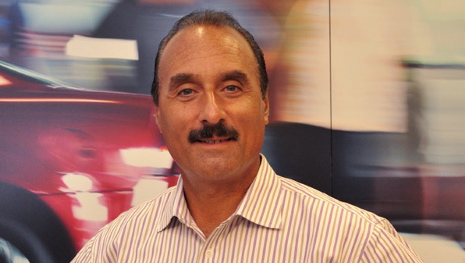Video: Kontos Talks Used Supply, Truck Strength & Recon

Tom Kontos, ADESA
There is the expectation out there that off-lease volume is set to spike in the second half of the year, and Tom Kontos echoes that sentiment.
In an interview with Black Book editorial director Ricky Beggs, Kontos — the chief economist at ADESA — talked on key aspects of the wholesale industry such as retail demand, off-lease supply, the certififed pre-owned business and more.
Kontos began by noting the softening of auction prices that analysts have long predicted is on its way.
“When we started seeing the uptick in new-car sales near the end of the recession and there was an uptick in leasing, as well, we knew there would be an uptick in off-lease volume at this time,” he said. “So we are starting to see the impact of that. As economists would always say, if you have got more supply, but the same level of demand out there, the only thing to adjust would be prices.”
We are beginning to see the “softening cycle” in wholesale values, Kontos said, which is largely due to incoming supply.
And the push-down is expected to speed up in the second half of the year.
“I think we will see that impact develop more strongly in the second half, resulting in further softening of used-car prices,” Kontos said.
But one factor has kept prices relatively stable so far this year: consumer demand.
And Kontos pointed out one niche market — CPO — is pushing this trend.
“Thus far, what has helped a lot has been the sheer level of retail demand, specifically for CPO vehicles. That has been a really hot area in the market, and that’s supported used-car values. It has extended the length of higher wholesale values a bit longer than I would have predicted,” Kontos said.
“It is a compatible product with the new and used-car business, and it helps in brand establishment for manufacturers. It’s a 'good guy' for the business,” he continued.
It is also good for wholesalers and consignors, as the CPO business has supported used-car values as of late.
The Tides Are Turning for Trucks
Trucks have experienced stronger price retention so far this year, but Beggs and Kontos discussed how the tides may turn as supply expands.
Recent turmoil in Eastern Europe and the Middle East have caused crude oil prices to rise as of late, but diesel fuel prices have remained relatively stable.
Beggs pointed out this trend has potentially increased demand for heavy trucks.
Another factor that is pushing prices higher for the truck segments is an influx of younger, lower-mileage trucks in the lanes.
Kontos said, “Some people have been saying that its (strong truck prices) been due to more of the younger 2012 model-year used trucks coming into the market, and that is inflating the average values of used trucks.”
High construction rates has also spurred demand for these work-ready vehicles.
That said, Kontos explained prices will eventually turn down, similar to trends seen in the car segments this year.
“There is a recovery in supply on the truck side … in that there is a greater availability of those used trucks — this will push prices down in the long run, but now it is actually helping prices because the dealers really need those cars, and independent truckers really need those trucks, as well,” Kontos explained.
In fact, prices for trucks have already started falling for auctions in the Northeast of the country, where Kontos said there is rapidly expanding supply.
“The Northeast has been an area where there is a high concentration of off-lease volumes, but at the same time, that was the part of the country that was impacted the most by weather,” Kontos said. “So that double whammy caused a greater amount of over-supply right now on the ground of used trucks coming out of off-lease and the rental fleets.
“You see softer prices for trucks in that region than in the rest of the country,” Kontos added.
ADESA is working to push some of that over supply into areas with higher demand and lower supply, which could potentially positively impact prices.
The company is also working to sell vehicles online and give the responsibility of moving the vehicle to the buyer.
“Opening it up to a broader geography online, you can alleviate some of the regional differences in price — we are trying to advise our customers to consider those upstream channels, as well as moving the vehicles,” Kontos said.
A Focus on Recon
Lastly, Beggs wrapped the interview up by asking Kontos for one piece of advice for those in the industry as they look forward to the second half of the year.
Kontos had one word: reconditioning.
He explained quality reconditioning benefits everyone in the business — buyer and consignor.
“Traditionally, I have been an advocate of reconditioning, and it’s not simply because that’s an area we generate some revenue in, but because it’s a win-win for the consignor and the buyer. If you buy a vehicle that is more retail ready, you can get it on the front line and retail it quicker,” Kontos said.
“So, strategically a little more recon in a more challenging pricing environment going forward is probably a good piece of advice,” he concluded.
To view the complete interview, see the above video.


